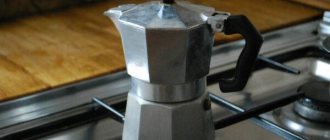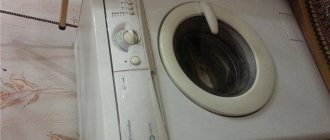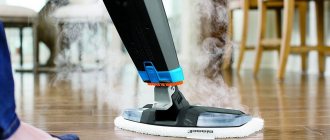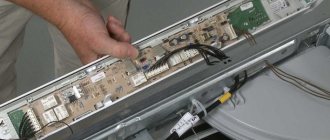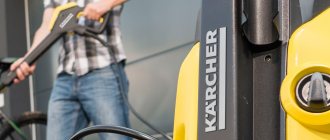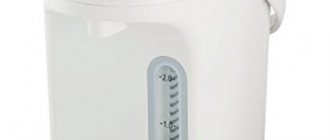The range of modern household appliances is constantly updated with various new products. Their purpose and capabilities are sometimes difficult to understand. Do I need to buy, for example, a steamer or a steam generator, and for what? If you're in doubt, let's find out how to use a steamer to get the best results from it.
Handheld steamers help gently iron or freshen clothes
The principle of operation of steamers and steam generators is clear from their name - ironing of clothes and home textiles occurs under the influence of hot steam. Essentially, they perform the function of an iron, but with a much wider range of capabilities. A variety of attachments allow you to straighten fabric, smooth creases (particularly on trousers), refresh the appearance, remove stains and dirt, and remove wool, hair or fluff. In addition, under the influence of high steam temperatures, microorganisms are destroyed, which ensures the disinfection of textiles.
It is most convenient to use a steamer in cases where you need to tidy things made from thin and delicate materials (silk, organza, knitwear) or, conversely, from dense and fleecy materials that are not advisable to iron (cashmere, wool, velvet, velor, jacquard, etc. .). Hot steam also works great on clothes decorated with rhinestones, sequins, beads, or those that have a large number of frills, folds, flounces and ruffles.
The main advantage of household steamers is that they can clean not only clothes, but also furniture upholstery, soft toys, curtains, bedding (pillows and blankets)
In order to properly use a steamer of any model, it is important to adhere to the manufacturer’s recommendations described in the instructions, and also not to try to disassemble and repair the device yourself. Correct operation is the main rule for long and efficient operation of household appliances.
Care must be taken when handling devices that generate hot steam, since the water in them is heated to boiling (100 ℃), and the steam temperature in some models can reach 140-160 ℃. When working with such equipment there is a high risk of burns.
Among the options that are common today are several types of equipment with the function of producing hot steam and supplying it under pressure:
- steam irons;
- steam generators;
- steamers (compact manual and stationary vertical).
Preparing to use the steamer
Preparing for the operation of such a device is completely simple.
It consists of only 2 steps:
- Filling the tank (special compartment) with clean water - it is worth noting that the steamer should operate exclusively on clean (distilled or filtered) water. The reason for this is high water hardness and scale, which settle on the filters of the device, and it fails in a short period of time.
- Waiting for the first steam - after you have poured water into the compartment, you need to wait until the water heats up, begins to evaporate and the device begins to release steam. This means that the device is working and completely ready for use.
Video
More information about the operating features of the device can be found in the following video:
Author: Anna Chizhik
Found a mistake? Select it and click the buttons:
Ctrl + Enter
Interesting! Astronauts, while in Earth orbit, solve the problem of dirty things using an original method. Clothes are dropped from the spacecraft and burn up in the upper atmosphere.
There are a variety of balls that are used in the washing machine. Antistatic ones will prevent the fabric from sticking to the body after washing, balls with special loops will “comb” the lint and prevent the appearance of pills, and silicone ones with pimples will prevent fluff from matting when washing outerwear.
In the 19th century, washing ladies' toilets took a lot of time. The dresses were first ripped open, and then each part was washed and dried separately so that the fabric did not become deformed. After washing, the clothes were sewn again.
The first officially patented washing machine was made of wood and was a box with a frame, half filled with wooden balls. Laundry for washing and detergent were loaded inside and the frame was moved using a lever, which, in turn, made the balls move and grind the laundry.
There is a washing machine “for bachelors”. Linen washed in such a unit does not need to be ironed at all! The thing is that the device does not have a drum: some things can be placed inside the container directly on hangers (for example, jackets and shirts), and smaller things (for example, underwear and socks) can be placed on special shelves.
Washing machines equipped with the “No Iron” or “Easy Iron” functions can wash clothes with little to no wrinkling. This effect is achieved through a special approach to spinning - it is performed at low speeds, with long pauses, and a small amount of water is retained in the tank.
History knows the fact that a kitten fell into the drum of a washing machine and, after going through a full wash cycle on the “Wool” program, got out of the unit unharmed. The only trouble for the pet was an allergy to washing powder.
For washing small items on the road or in a hotel, it is convenient to use a regular plastic bag. Socks or tights are kneaded inside a tied bag along with water and a small amount of detergent. This method allows you to pre-soak things and wash them without damaging the fabric or wasting a lot of powder and water.
The expression “soap opera” (“soap”) did not arise by chance. The very first series and shows that had a female audience were broadcast on television at a time when housewives did cleaning, ironing and laundry. In addition, to attract female viewers to the screens, commercials for detergents: soaps and powders were often played on air.
Preparing items for ironing (steaming)
There are two basic types of steamers:
- Manual – the model is intended exclusively for manual use. To iron clothes with this machine, you need to find a hanger and hang the item on it.
- Floor-standing - this steamer is equipped with a stand with a hanger, with which you will not need to waste time looking for a hanger. Ironing is quick and comfortable.
So what's the advantage? In the case of a manual steamer, you will have to look for a place (this could be a closet or any other door) where you can steam the item, and you also need to find a hanger.
But a definite advantage is that such models are quite mobile and easy enough to take on a trip, so that they will delight you not only at home, but also on vacation.
As for the floor-standing device, there are some disadvantages and completely new advantages. As already mentioned, the device is equipped with a stand with a hanger, with which you will not need to waste time looking for a hanger.
Such a hanger is no worse than a regular one; jackets, jackets, T-shirts and shirts can be freely placed on it. In addition, this model has clothespins (clips) with which you can iron waist items (trousers, jeans, skirts).
Rules for ironing products made from different fabrics
Ironing can be compared to washing - each material requires different temperatures and steaming times. Before you start steaming the product, carefully review the instructions that come with the device or read the useful information below.
- Cotton – steamed for 4 to 6 minutes. When you start ironing, pull the fabric down and run the steamer through it. In the case of sleeves, pull them to the sides. Don't overdo it, or you might ruin the fabric. When you steam cotton shirts, use extra ironing pads to help remove creases between buttons, pockets, and other hard-to-reach areas.
- Tweed - it will take 7-10 minutes to smooth out this material. When smoothing the fabric, press the device as much as possible against the fabric. Use attachments.
- Jeans – steaming time varies from 4 to 6 minutes. The ironing procedure is identical to cotton - the fabric must be pulled tightly and the steamer pressed against the fabric.
Silk - in this case, you need to fix it with special holders for better ironing. In addition, do not press the device against the fabric under any circumstances, that is, keep a distance.
Such materials are made of light fibers, so one pair is enough. This rule applies not only to silk, but also to other fabrics with a similar structure: wool and knitwear.
Additional functions
Additional functions that are often equipped with equipment increase its cost. At the same time, they make using the device more comfortable and safe.
- Auto shutdown
A useful and convenient feature that prevents the device from overheating. Even if you forget to turn off the iron from the network before leaving the house, nothing bad will happen - it will turn off on its own after a certain time, while in a stationary position.
- Stop drop
A special anti-drip system prevents heated water from leaking out of the container during operation. This will protect against burns and excessive fluid consumption.
- Button tray
There are special grooves along the edges of the sole that make it easy to iron small items without having to bypass buttons, snaps and other fasteners.
- Self-cleaning
The presence of this function allows you to safely use ordinary tap water for work, rather than distilled water. By selecting the appropriate mode on the device, it removes accumulated salts from the iron.
Important! Even if you are completely satisfied with an iron with a steamer in terms of technical parameters, you should check its ease of use before purchasing. A heavy device with an inappropriate handle will completely negate all the benefits of the purchase if it is uncomfortable to hold in your hand.
How to use a steamer correctly
In fact, steaming clothes is not difficult at all. Let's look at the basic steps and possible difficulties you may encounter.
Following these recommendations, your items will remain in their original condition.
- First, you need to hang your clothes on a hanger (if you have a floor model) or first find a hanger and then hang the item on it. Hang it level and so that nothing interferes with your ironing.
- The next step is to fill the special compartment with water (distilled or filtered) water. You can use any water, but keep in mind that this will damage the device very quickly. Since tap water is quite hard and forms scale in the device. Moreover, limescale can leave a mark on white clothes.
- Next, you need to wait for the first steam to appear. This is a sign that the device is working and is completely ready for use. At this point you can start steam ironing the item. To iron hard-to-reach places, such as collars, cuffs, pockets, use the special iron that comes with the device. Be sure to wear a glove on your free hand to protect it from the steam.
- After you have ironed your clothes, you must turn off the steamer. Allow the item to hang and cool slightly, after which you can remove it from the hanger and put it on.
What you need to know about security?
Take precautions when using a garment steamer:
- close the tank tightly so that it does not leak;
- Do not touch the atomizer when dispensing steam, it may heat up;
- unplug the device and let it cool before changing the nozzle or adding water;
- do not shake or turn the device over when using;
- do not leave the device turned on unattended;
- Do not point the sprayer at a person.
After steaming, the device must be unplugged and the remaining water drained from the tank.
Pros and cons of a steamer
The advantages include:
- Gentle effect on the fabric - the iron presses the fabric and soon it quickly deteriorates and becomes deformed.
- Mobility – there are small compact models of the device that you can take with you on a trip.
- The absence of a huge unnecessary ironing board, which must first be pulled out, then laid out, and only after these manipulations can you start ironing clothes.
- Easy steaming of items with beads, rhinestones and other decorative elements.
- The steamer is equipped with a disinfection function - you can get rid of unpleasant odors and even mites.
The disadvantages include:
- Manual models should not be turned over, otherwise you risk getting burned. You need to get used to the device.
- Some models have a small water compartment, which means that when steaming large amounts of clothing, you need to add water frequently.
- Still, some models, even the most powerful ones, unfortunately, are not able to cope with dense fabrics.
The main disadvantage is the high cost of a good, powerful device.
Kinds
Modern manufacturers produce several types of products:
- traditional irons equipped with a vertical steam function;
- steam stations;
- steamers.
The first type of device has the shape of a regular iron. Their advantage is their compactness. Steam stations are more complex devices. They consist of three main components: a separate large-volume boiler, a conventionally shaped iron and a connecting hose.
Steamers have approximately the same, but more compact design. They consist of a floor-mounted steam generator, a connecting hose and an attachment in the form of an iron.
Based on power consumption, vertical steam irons are divided into 2 large groups:
- With a power of 1.6-2.4 kW . Designed for home use. They cope well with ironing soft fabrics.
- With a power of 2.1-2.4 kW . Available for commercial use and heavy fabrics.
To work with light materials, a steam volume of 35-60 g/min is sufficient. This indicator must be taken into account when choosing the right model. The amount of steam produced by the device depends on the power of the heating element. And the duration of continuous operation of the iron depends on the volume of the water tank.
